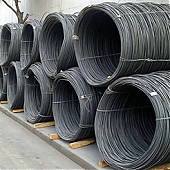What are the cons of galvanized steel pipes?
Galvanized steel pipes are widely used in various industries and applications due to their durability and resistance to corrosion. However, there are also several disadvantages and cons to using galvanized steel pipes that should be considered before making a decision.
One of the primary drawbacks of galvanized steel pipes is that they are prone to rust and corrosion over time. This can lead to leaks and other issues that can be costly to repair. While galvanized steel pipes are coated with a layer of zinc to protect against rust and corrosion, this coating can wear off over time, leaving the steel exposed to the elements.
Another con of galvanized steel pipes is that they are typically more expensive than other types of pipes, such as PVC or copper. This can make them less cost-effective for certain applications, especially when considering the long-term maintenance costs.
Galvanized steel pipes can also be more difficult to install than other types of pipes. They are typically heavier and require specialized tools and equipment for cutting and fitting. This can make the installation process more time-consuming and labor-intensive, which can add to the overall cost of the project.
In addition, galvanized steel pipes are not as flexible as other types of pipes, which can make them more difficult to work with in certain applications. They are also more prone to clogs and blockages, which can lead to reduced water flow and other issues.
Finally, galvanized steel pipes may not be suitable for use with certain types of water and other liquids. The zinc coating on the pipes can react with certain chemicals and substances, leading to contamination and other issues.
In conclusion, while galvanized steel pipes offer several advantages, including durability and resistance to corrosion, there are also several cons that should be considered before making a decision. These include the potential for rust and corrosion, higher cost, difficulty of installation, reduced flexibility, and potential for contamination. It is important to carefully weigh these factors when selecting piping materials for your project or application.
Related Products

Factory Introduction
Cold-Rolled vs. Hot-Rolled Stainless Steel Sheets
Jaway Steel: Your Premier Partner for Premium Stainless Steel Products